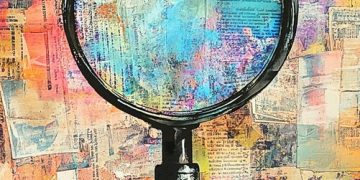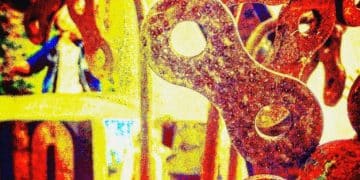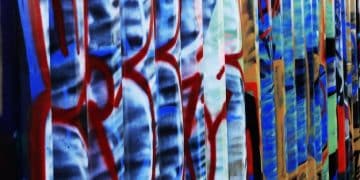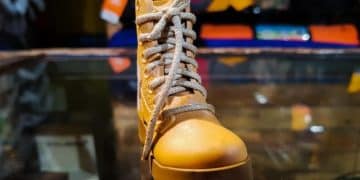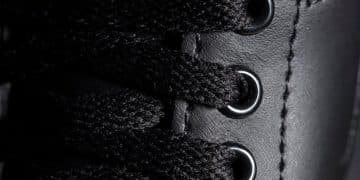Graffiti Art Authentication: Spotting Fakes & Protecting Investment in 2025
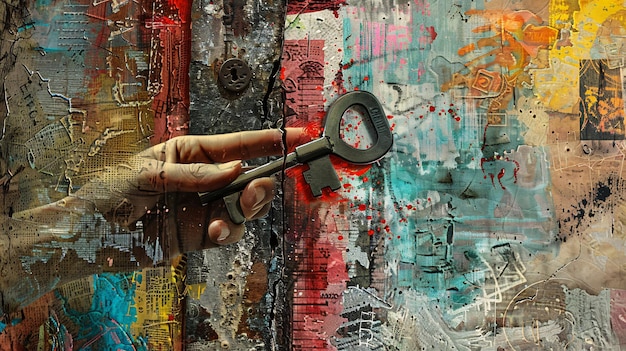
Graffiti art authentication involves a meticulous process spanning provenance research, stylistic analysis, medium examination, and expert connoisseurship to discern genuine works from counterfeits, safeguarding collectors’ investments in a dynamic and often opaque market.
In the vibrant, sometimes elusive world of urban art, the phrase Graffiti Art Authentication: Spotting Fakes and Protecting Your Investment in 2025 has become increasingly critical. As the market for graffiti art continues its upward trajectory, so too does the sophistication of forgeries, posing significant risks to collectors and investors. This guide delves into the essential methods and burgeoning technologies poised to secure the authenticity of your prized urban art pieces in the coming years.
The Evolution of Graffiti Art as a Collectible Asset
Once relegated to city walls and clandestine operations, graffiti art has undergone a profound transformation, moving from the streets to established galleries and auction houses. This shift, driven by widespread cultural recognition and the emergence of institutional collectors, has elevated graffiti art to a legitimate and often lucrative collectible asset. However, with increased value comes increased scrutiny and the inevitable challenge of distinguishing genuine works from sophisticated imitations. The art world, perpetually grappling with authenticity, now faces unique hurdles in a domain where many artists originally operated anonymously, and documentation was often nonexistent.
The journey from ephemeral street expression to coveted art object has been both rapid and complex. Pioneers of the movement, whose works were initially painted over or destroyed, are now celebrated, with their surviving pieces fetching significant sums. This historical context underscores the urgent need for robust authentication practices. As market enthusiasm grows, so does the responsibility of collectors and dealers to ensure the integrity of their acquisitions. The absence of traditional art market hierarchies and formal documentation in the early days of graffiti art creates a fertile ground for counterfeits, making discerning a real piece from a fake an art form in itself.
From Street to Gallery: A Shifting Paradigm
The transition of graffiti art from the urban landscape to the commercial gallery space fundamentally altered its status and value. This paradigm shift brought new audiences, but also new challenges in terms of preservation and provenance. The very nature of graffiti – often temporary, site-specific, and anonymous – conflicts with the traditional art market’s demands for clear history and verifiable origin. This tension forms the bedrock of authentication complexities.
- Increased Market Value: Works by renowned graffiti artists now command prices comparable to established contemporary artists.
- Growing Collector Base: A diverse range of collectors, from private individuals to museums, are actively acquiring graffiti art.
- Preservation Challenges: Original street works are inherently fragile, making their removal and preservation a delicate and often controversial process.
Understanding this historical and commercial evolution is the first step in appreciating the nuances of graffiti art authentication. The methodologies developed must acknowledge the art form’s unique origins while adapting to the stringent requirements of the contemporary art market.
The Rise of Forgeries and Counterfeiting
As prices climb, so does the incentive for unscrupulous individuals to create and disseminate fake artworks. The decentralized and often informal nature of early graffiti art makes it particularly vulnerable. Forgeries can range from crude imitations to highly convincing replicas, often exploiting gaps in provenance or the historical anonymity of artists. Protecting investments requires vigilance and a deep understanding of the artist’s unique style and materials.
The art world is no stranger to fakes, but graffiti art presents a newer frontier for these deceptive practices. Collectors must therefore equip themselves with the knowledge and resources necessary to navigate this challenging landscape. The coming years will undoubtedly see an increase in both the volume and sophistication of counterfeits, making robust authentication methods more vital than ever.
The imperative to protect investments underscores the critical role of genuine authentication. Without reliable methods, the market’s integrity could be compromised, deterring future collectors and diminishing the art form’s long-term value. This section sets the stage for exploring the practical tools and expertise required to navigate this complex terrain.
For individuals new to collecting graffiti art, the prospect of encountering fakes can be daunting. It is essential to approach acquisitions with a critical eye and to seek professional advice. The market’s dynamism means that new challenges continuously emerge, requiring collectors to remain informed and proactive in their authentication efforts.
Understanding Artist Provenance and Documentation for Authentication
Provenance, often considered the backbone of art authentication, is the documented history of ownership of a work of art. For graffiti art, establishing clear provenance can be a labyrinthine task due to the art form’s unconventional origins. Many early graffiti artists operated under pseudonyms, and their works were rarely documented with formal bills of sale or exhibition records. However, as the market matures, the importance of provenance grows exponentially. A robust paper trail, even for contemporary pieces, significantly enhances a work’s value and provides crucial evidence of its authenticity.
For older works, collectors often rely on anecdotal evidence, photographs, and testimonies from individuals closely associated with the artist or the scene. While less formal, these can still contribute to a compelling provenance narrative. In 2025, advanced digital tools are making it easier to collate and verify such information, constructing a more comprehensive history for each piece. The goal is always to trace the artwork back to the artist’s hands, or at least to a trusted source with direct knowledge of its creation.
The Challenging Nature of Early Graffiti Provenance
The very essence of early graffiti was its transient nature and detachment from commercialism. This meant that formal documentation was rarely a priority. Many iconic pieces existed only briefly before being painted over or destroyed, leaving behind a fragmented history. The challenge lies in piecing together these fragments using various sources.
- Lack of Formal Records: No gallery invoices, exhibition catalogs, or traditional certificates of authenticity for early works.
- Anonymous or Pseudonymous Artists: The use of tags and aliases obscured true identities, complicating verification.
- Ephemeral Medium: Works on temporary surfaces like subway cars or walls were not intended for preservation, making their origin harder to track if removed.
Despite these challenges, diligent research can often unveil a credible history. This process demands detective-like skills, often involving deep dives into historical archives, old photography, and interviews with key figures from the era.
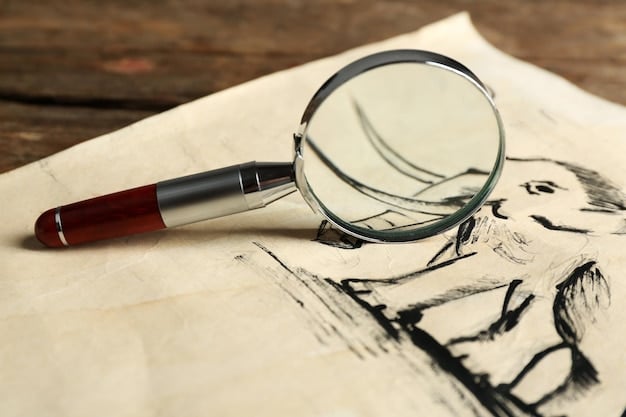
Modern Documentation Practices
Fortunately, the landscape for contemporary graffiti art is different. Artists, galleries, and collectors have increasingly adopted more rigorous documentation practices. This includes formal certificates of authenticity (COAs), detailed photographs of the artwork’s creation, and comprehensive sales records. For works created in a studio setting, this documentation should be as meticulous as for any other contemporary art form. When purchasing new pieces, always insist on thorough and verifiable documentation.
The digital age has also ushered in new possibilities for securing provenance. Blockchain technology, for instance, offers an immutable record of ownership and transactional history. While still evolving, these technologies are poised to become standard in the art market, providing an unprecedented level of transparency and security. The integration of such innovations is crucial for enhancing trust in the graffiti art market.
Collectors should be proactive in requesting and maintaining detailed documentation for every piece they acquire. This practice not only safeguards their investment but also contributes to the overall stability and credibility of the graffiti art market as a whole. A well-documented piece is inherently more valuable and less susceptible to authenticity disputes.
Forensic and Scientific Analysis Techniques for Graffiti Art
Beyond traditional provenance research, forensic and scientific analyses offer powerful tools for validating graffiti art. These techniques delve into the very materiality of the artwork, examining pigments, binders, and substrates to glean insights into its age, composition, and authenticity. As forgers become more sophisticated, so too must the methods of detection, with science providing an increasingly vital line of defense.
For graffiti art, understanding the specific types of paints, markers, and surfaces used during a particular period is crucial. Artists often favored certain brands or materials due to availability, cost, or desired effect. Scientific analysis can detect modern pigments in works purportedly from earlier decades, a clear red flag. In 2025, advancements in non-destructive testing are making these analyses more accessible and reliable, ensuring artworks remain unharmed during examination.
Material Analysis: Unmasking Anachronisms
One of the most effective ways to spot a fake is to analyze the materials used. Different eras and geographies had access to different pigments and mediums. A work claiming to be from the 1970s, for example, but containing pigments not commercially available until the 1990s, is almost certainly a forgery.
- Pigment Analysis: Identifying the chemical composition of paints to match historical availability and artist’s known palette.
- Binder Analysis: Examining the binding agents in paints to determine their type and age.
- Substrate Examination: Analyzing the canvas, wall, or other surface for consistency with the purported period and artist’s practice.
These analyses often require sophisticated equipment, such as Gas Chromatography-Mass Spectrometry (GC-MS) or Fourier Transform Infrared (FTIR) spectroscopy. While costly, the investment in such forensic examination can save collectors from far greater financial losses experienced through acquiring a significant fake.
Dating Techniques and Signature Analysis
Beyond material composition, scientific methods can assist in dating an artwork and analyzing crucial details like signatures or tags. Carbon dating, while destructive and often impractical for small art samples, can sometimes be applied to organic components of a work. More commonly, analysts rely on less invasive methods and comparative analysis.
Signature analysis involves a meticulous study of the artist’s hand. This isn’t just about comparing the appearance of a signature but examining pressure, stroke order, and consistency with known authentic works. Graffiti artists often have highly individualized tags, making careful analysis of these unique “signatures” paramount. Any deviations, even subtle ones, can point to a forgery.
The combination of material science and careful document analysis, including microscopic examination of brushstrokes or spray patterns, provides a comprehensive approach to authentication. This multi-faceted strategy ensures that no single piece of evidence is relied upon in isolation, building a stronger case for or against authenticity.
As the technology evolves, these techniques become more precise, offering collectors greater peace of mind. Investing in expert forensic analysis should be seen as a critical component of due diligence for any significant acquisition in the graffiti art market. This scientific rigor complements and strengthens traditional connoisseurship, providing an objective layer of verification.
The Indispensable Role of Connoisseurship and Expert Opinion
While scientific analysis provides objective data, the nuanced world of art authentication ultimately relies heavily on connoisseurship and expert opinion. Connoisseurs, with their deep understanding of an artist’s oeuvre, style, and working methods, possess an intuitive ability to feel the “hand” of the artist. This qualitative assessment, cultivated over years of experience and direct engagement with artworks, is irreplaceable in the authentication process for graffiti art, where the line between genuine expression and imitation can be incredibly fine.
A seasoned expert in graffiti art will have studied hundreds, if not thousands, of works by a particular artist. They understand the evolution of their style, the subtle shifts in their color palette, the intricacies of their line work, and even the “mistakes” that are characteristic of a genuine creation. This expertise allows them to spot inconsistencies that scientific instruments might miss, such as a lack of fluidity in a tag or an anachronistic stylistic element that deviates from the artist’s known period of creativity. Establishing trust with reputable experts is paramount for collectors.
Developing a “Trained Eye” for Graffiti Style and Technique
Connoisseurship is not simply a subjective feeling; it is a highly developed skill based on extensive visual memory and analytical prowess. For graffiti art, this involves a deep dive into the specific characteristics that define an artist’s work:
- Stylistic Signatures: Identifying unique forms, letter structures, and character designs that are unmistakably linked to a particular artist.
- Technical Mastery: Assessing the control, flow, and consistency of spray paint application, brushstrokes, or marker lines.
- Material Preferences: Recognizing the particular brands of paint, caps, or tools an artist typically used and their characteristic effects.
An expert can often identify a fake almost instinctively, long before any scientific tests are conducted, simply by observing a fundamental disconnect from the artist’s established aesthetic. This “trained eye” is a valuable asset in the fight against forgeries.
The Network of Experts and the Authentication Committee
In many segments of the art market, authentication committees comprising leading scholars and experts are formed to make authoritative judgments. While less formal in the nascent graffiti art market, the principle remains. Engaging multiple experts can provide a more robust consensus, reducing the risk of a single erroneous opinion. These experts often have personal connections to the artists, or an intimate knowledge of their working habits, which can be crucial for works without formal documentation.
Furthermore, experts can identify if a piece is a collaboration, a studio assistant’s work, or a direct forgery. Their knowledge extends beyond the visual to include the context of creation, the artist’s relationships, and the broader historical art scene. Building relationships with these knowledgeable individuals is a strategic step for any serious collector of graffiti art.
The role of connoisseurship is not to disregard scientific evidence but to complement it. Together, human expertise and technological analysis create the most comprehensive and reliable authentication process. As the market for graffiti art continues to mature, the demand for highly skilled and ethical connoisseurs will only increase, underscoring their vital importance in protecting investments.
Navigating Online Marketplaces and Digital Signatures in 2025
The digital age has brought both unprecedented opportunities and heightened risks to the art market, particularly for graffiti art. Online marketplaces offer a global platform for buying and selling, but they also provide anonymity for fraudsters. In 2025, navigating these digital spaces requires a nuanced approach, combining traditional due diligence with an understanding of emerging digital authentication tools like NFTs and cryptographic signatures. These new technologies offer a promising future for securing authenticity in a predominantly digital ecosystem.
The sheer volume of transactions occurring online makes it impossible for human experts to vet every single piece. This necessitates the development of scalable, secure digital solutions. Collectors must become adept at evaluating sellers, checking digital provenance records, and understanding the implications of purchasing art that may exist primarily as a digital file or token. The challenge lies in bridging the gap between a physical artwork and its digital representation, ensuring that the digital signature accurately reflects the tangible object.
Vetting Sellers and Platforms
One of the most immediate steps in online art acquisition is to thoroughly vet the seller and the platform itself. Reputable galleries and auction houses with established online presences typically offer more built-in safeguards, though vigilance is still required. For independent sellers or less regulated platforms, the onus is on the buyer to perform extensive checks.
- Check Seller Reputation: Look for reviews, testimonials, and a history of successful, authentic sales.
- Examine Return Policies: Understand the platform’s buyer protection and dispute resolution mechanisms.
- Request High-Resolution Images and Videos: Insist on seeing detailed visuals, including close-ups of signatures, textures, and the back of the artwork.
Skepticism is a healthy approach when encountering deals that seem too good to be true. Remember, the online world provides both convenience and potential pitfalls, so proceed with caution and verification at every step.
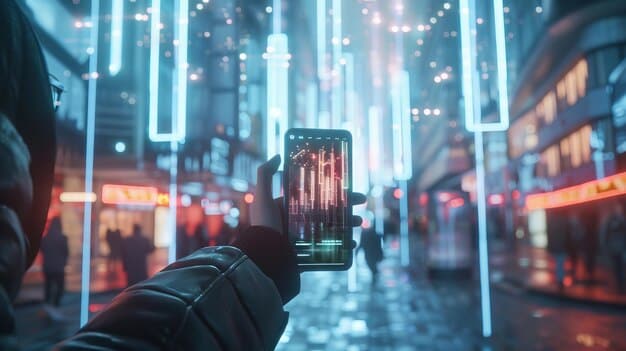
The Promise of NFTs and Blockchain for Authentication
Non-Fungible Tokens (NFTs) and blockchain technology are revolutionizing art authentication by providing a tamper-proof, decentralized ledger of ownership and authenticity. For graffiti art, where provenance can be elusive, this technology offers a robust solution:
- Immutable Provenance Records: Each transaction, from creation to sale, can be recorded on a blockchain, creating an unalterable history.
- Digital Certificates of Authenticity: NFTs can serve as unique digital certificates linked to a physical artwork, proving its originality.
- Creator Royalties: Smart contracts embedded in NFTs can ensure artists receive royalties on secondary sales, providing ongoing financial benefit.
While still in its early stages of adoption within the traditional art market, blockchain’s potential for graffiti art is immense. It addresses many of the historical challenges related to documentation and ownership verification, offering a new era of transparency and security for collectors. As 2025 approaches, we can expect to see more widespread implementation of these technologies, making them a critical tool for protecting investments.
Collectors should familiarize themselves with how NFTs and blockchain work, and consider platforms that are actively integrating these technologies into their authentication processes. This forward-thinking approach will be vital for safeguarding against fakes in an increasingly digital art world.
Protecting Your Investment: Insurance, Storage, and Legal Recourse
Acquiring valuable graffiti art is not merely about identifying authentic pieces; it’s also about establishing a secure framework for their preservation and protection. Beyond authentication, collectors must consider aspects such as appropriate insurance, secure storage solutions, and understanding their legal recourse in cases of forgery or damage. A comprehensive approach ensures that your investment is safeguarded from all angles, providing long-term peace of mind and preserving the artwork’s value for future generations.
The unique characteristics of graffiti art, sometimes created on unconventional media or with unusual materials, demand specialized considerations for storage and conservation. Standard art insurance policies may not fully cover the specific risks associated with these works, making it essential to consult with experts. Furthermore, understanding the legal landscape related to art forgery and consumer protection is crucial for navigating potential disputes effectively.
Specialized Insurance for Graffiti Art
Standard homeowner’s insurance policies are often insufficient for covering high-value artworks, and fine art policies may require specific riders for urban or street art due to its unique origins and materials. Insuring graffiti art requires a detailed appraisal and disclosure of the work’s condition, provenance, and estimated value.
- Expert Appraisal: Obtain a professional appraisal from a qualified art appraiser with experience in contemporary and urban art.
- Artwork Documentation: Provide high-resolution photographs, certificates of authenticity, and all available provenance documentation to your insurer.
- Environmental Controls: Discuss specific storage requirements (temperature, humidity) with your insurer, as these can affect coverage.
It’s crucial to work with an insurance provider that understands the nuances of the graffiti art market. This ensures that your policy adequately protects against risks such as damage, theft, or even disputes over authenticity.
Optimal Storage and Conservation Practices
Proper storage is essential for preserving the physical integrity and value of graffiti art. Works on canvas, paper, or found objects may have different needs. Factors such as light exposure, humidity, temperature fluctuations, and pest control must be carefully managed to prevent degradation.
Conservation for graffiti art often involves specialized techniques. For works retrieved from public spaces, conservators address damage from weather exposure, pollution, or previous attempts at removal. Always consult with professional art conservators specializing in contemporary materials to ensure best practices are followed. This proactive approach to preservation ensures the longevity of your investment.
Investing in museum-quality framing, archival storage materials, and professional installation can significantly mitigate physical risks and maintain the artwork’s pristine condition.
Legal Recourse Against Forgery
In the unfortunate event of acquiring a forged artwork, understanding your legal options is paramount. Laws regarding art fraud vary by jurisdiction, but generally, protections exist for buyers who have been sold a non-authentic piece under false pretenses. Prompt action is often critical.
This typically involves gathering all documentation related to the purchase, including communications, transaction records, and authentication reports. Consulting with a lawyer specializing in art law is highly recommended to explore options such as rescission of sale, claims for damages, or reporting criminal fraud. A strong paper trail and expert authentication reports are your best allies in any legal dispute.
Having a clear understanding of the full scope of risks and protections allows collectors to engage with the graffiti art market with greater confidence. proactive measures in insurance, storage, and legal preparedness form an essential shield around your valuable acquisitions, protecting them for years to come.
Future Trends in Graffiti Art Authentication and Protection
As we advance towards 2025 and beyond, the methods and technologies for graffiti art authentication are poised for significant evolution. The dynamic nature of the art form itself, coupled with rapid advancements in digital and forensic science, will continue to shape how authenticity is verified and investments are protected. Future trends point towards an increasingly integrated approach, combining artificial intelligence, enhanced blockchain applications, and a renewed emphasis on ethical collecting practices.
The speed at which new art is created and disseminated, particularly in the urban sphere, demands authentication solutions that are equally agile and scalable. This necessitates not just more sophisticated tools but also greater collaboration across institutions, artists, and technology developers. The goal is to create an ecosystem where transparency and trust are paramount, allowing the graffiti art market to thrive without being undermined by fraud.
AI and Machine Learning for Style Recognition
Artificial Intelligence (AI) and machine learning algorithms are emerging as powerful tools for analyzing stylistic patterns in art, including graffiti. By training AI models on vast datasets of authenticated works by a specific artist, these systems can learn to identify subtle features, brushstrokes, color palettes, and compositional structures unique to that artist. This can significantly aid in preliminary authentication, flagging potential inconsistencies that human eyes might miss.
- Pattern Recognition: AI can detect recurring motifs, letter forms, and overall compositional balance characteristic of an artist’s style.
- Fraud Detection: Machine learning algorithms can identify anomalies or deviations from an artist’s typical output, signaling possible forgeries.
- Scalable Analysis: AI can process and compare large volumes of data much faster than human experts, aiding in initial screenings.
While AI will not replace human connoisseurship, it will serve as an invaluable assistive technology, providing an objective layer of analysis that enhances the overall authentication process. The integration of AI into art forensics labs is a trend we can expect to see grow.
Enhanced Blockchain Applications and Digital Twins
Building on current NFT and blockchain initiatives, future applications will likely include “digital twins” of physical artworks. This involves creating a highly accurate 3D scan or detailed digital representation of an artwork, which is then permanently linked to a blockchain token. Any alterations or damages to the physical piece could potentially be tracked against its digital twin, providing indisputable evidence.
The evolution of blockchain will also see more sophisticated smart contracts that automate royalty payments, establish clear ownership hierarchies, and even manage fractional ownership of high-value pieces. These advancements promise to bring unparalleled levels of security and transparency to the graffiti art market, establishing a robust framework for investment protection.
The future of graffiti art authentication lies in this synergy of traditional expertise and cutting-edge technology. By embracing these advancements, collectors can navigate the market with greater confidence, ensuring the integrity of their collections and the legacy of the artists they support. The landscape is continually evolving, and staying informed about these trends will be key to protecting your investment in 2025 and beyond.
| Key Point | Brief Description |
|---|---|
| 📝 Provenance Research | Tracing artwork history through documentation, photos, and testimonies to establish legitimate origin. |
| 🔬 Forensic Analysis | Scientific examination of materials (pigments, binders) to detect anachronisms and verify composition. |
| 👀 Expert Connoisseurship | Reliance on experienced art experts for stylistic analysis, technique assessment, and artist’s unique hand. |
| 🔗 Digital Safeguards | Utilizing blockchain and NFTs for immutable provenance records and secure digital certificates of authenticity. |
Frequently Asked Questions About Graffiti Art Authentication
Graffiti art often originates from anonymous street contexts with minimal formal documentation. Early works lacked traditional provenance like gallery records or artist signatures, making verification more complex. Its ephemeral nature and unconventional materials also pose unique challenges for establishing a clear history compared to studio-based art.
COAs are crucial, especially for contemporary graffiti art. Issued by the artist, their studio, or a recognized expert, a COA formally attests to the artwork’s authenticity. For older works, a COA might be issued retrospectively by an authentication committee. Always ensure the COA is verifiable and from a reputable source, as fake COAs do exist.
While DNA analysis is primarily used in forensics on organic matter, its direct application for art authentication is limited. However, some artists incorporate specific organic materials into their work, or DNA traces might link to a known source if present. More commonly, scientific methods focus on pigments and binders, rather than direct human biological material, for verification.
A graffiti artist’s tag is their unique signature and a vital component of authentication. Experts analyze the specific style, pressure, flow, and consistency of the tag against known authentic examples. Any significant deviation can indicate a forgery. The tag is often as unique and personally identifiable as a traditional artist’s signature, requiring meticulous comparison.
When buying online, always vet the seller rigorously, check their reputation, and insist on comprehensive, high-resolution images and videos of the artwork. Demand clear provenance documentation, including COAs, and understand the platform’s return policies. Consider platforms integrating blockchain or NFTs for enhanced digital provenance, and use escrow services for secure transactions.
Conclusion
The journey of graffiti art from urban rebellion to a highly coveted collectible has cemented its place in the global art market. However, with this elevated status comes the critical need for sophisticated authentication processes. As we move through 2025, the principles of Graffiti Art Authentication: Spotting Fakes and Protecting Your Investment will increasingly rely on a powerful synergy of meticulous provenance research, advanced forensic science, invaluable expert connoisseurship, and innovative digital technologies like blockchain and AI. Protecting your investment in this dynamic genre demands vigilance, informed decision-making, and a proactive engagement with both established and emerging authentication tools. By understanding these facets, collectors can confidently navigate the market, ensuring the enduring value and integrity of their cherished urban art acquisitions.
